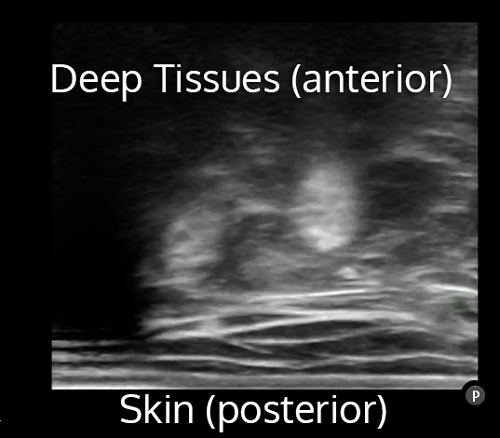78 yo female presents with an ankle injury that was sustained after a fall from standing.
The patient has a history of severe pulmonary hypertension and CHF and is on 4L of nasal oxygen at all times. Orthopedics is requesting a sedation for reduction, but you are reluctant to perform this in the ED due to her significant comorbidities. What nerve block can be done to assist the reduction?

Answer: Popliteal Sciatic nerve block
- Popliteal sciatic nerve blocks (or popliteal blocks) have been well described in the anesthesia and operative literature, and this technique has recently begun to be utilized in the emergency department.1

- The popliteal block provides anesthesia to the distal tibia and fibula, the majority of the foot and ankle, and the skin overlying the lateral aspect of lower extremity.1 Complete analgesia below the knee requires addition of a femoral nerve block.1
- Indications for this block include cutaneous lacerations, abscesses localized to the lateral aspect of the leg, and lower extremity fractures.
- While there are many different approaches to perform this block, the traditional technique involves elevating the lower extremity in relation to the upper leg in a supine patient (often with blankets), placing the transducer beneath the knee, and approaching the nerve with the needle in plane from a lateral position.
- The typical honeycomb appearance of the common peroneal (fibular) nerve and the tibial nerve should be identified in the popliteal fossa. They should then be followed up until just before they combine into the sciatic nerve.
- The needle should be introduced just distal to the bifurcation of the sciatic nerve between the two separate nerves. Introducing the anesthetic here instead of proximal to the bifurcation has been shown to decrease time to adequate analgesia.2
- When a supine approach is attempted, the provider may find it easiest to flip the ultrasound image upside down so that anatomic orientation is consistent with what is displayed:

- Visit 5minsono for a video tutorial on this block.
 If you like the ultrasound education you get from UOTW, you will absolutely love CastleFest, a world class ultrasound event held in April. Whether you’re an ultrasound novice or want to hone your experienced skills, come eat, drink and learn with the best educators in the field: Dawson, Mallin, Weingart, Mallemat, and more. Oh, and I’ll be there too. Register now.
If you like the ultrasound education you get from UOTW, you will absolutely love CastleFest, a world class ultrasound event held in April. Whether you’re an ultrasound novice or want to hone your experienced skills, come eat, drink and learn with the best educators in the field: Dawson, Mallin, Weingart, Mallemat, and more. Oh, and I’ll be there too. Register now.
- Herring AA, Stone MB, Fischer J. Ultrasound-guided distal popliteal sciatic nerve block for ED anesthesia. The American journal of emergency medicine. 29(6):697.e3-5. 2011. [pubmed]
- Prasad A, Perlas A, Ramlogan R, Brull R, Chan V. Ultrasound-guided popliteal block distal to sciatic nerve bifurcation shortens onset time: a prospective randomized double-blind study. Regional anesthesia and pain medicine. 35(3):267-71. 2010. [pubmed]



